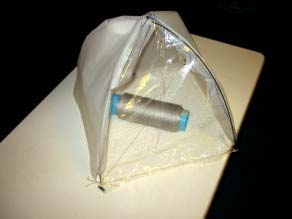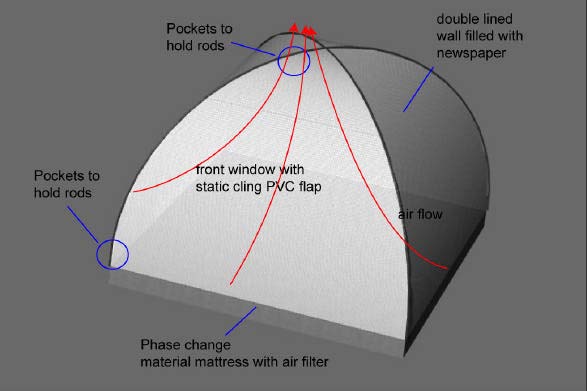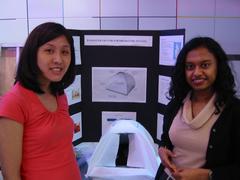Non-Electric Incubator for Premature Infants
In the developing world every year almost one million infants die in their first month of life due to the results of premature birth, heat loss and dehydration. To address this problem, the non-electric premature incubator is adapted to conditions in developing countries.
Modern high tech incubators don’t adequately serve the developing world, because they are too costly and dependent on electricity. Applications for the developing world, spots of humanitarian crisis and areas devastated by disaster should function without electricity because of possible lacks in supply or sudden cuts. At the same time, they should be easy to transport, be lightweight, easy to dismantle and to set up, be robust and low-cost. To serve the needs of the premature infant, an incubator has to provide an ambient temperature of 34°C – 37°C, air humidity of 70%, a sterile air supply and visible light.
Therefore, the elements included in the design have to be a sufficient source of heat, an effective thermally driven air purification system, that provides oxygen while removing bacteria and an insulating, sound reducing container to house the infant, while allowing easy access to the infant, and a medium that allows light.


The container consists of a miniature classic igloo dome tent with a square base and two bendable rods, that can be made of aluminum, carbon fibre or wood (bamboo), running through guide channels in the canvas, crossing each other, thus naturally bringing tension to the structure, while using the smallest amount of material and being easy to build up and dismantle.
The tent canvas has to be made of a water and air tight material such as polyester or polyamid fabric to be able to control the air flow and humidity. In order to insulate, the canvas will be double layered and filled with newspaper. One side will be made of clear polymer to provide physical and visible accessibility. For reasons of cost and insulation a simple flap will be used for closing. Testing is needed for whether this window means a heat loss or increase by inducing a greenhouse effect. The bottom of the tent is double layered with an opening to slide in the heating mattress.
The connection element between the bottom and the canvas consists of an air purification mesh, making use of the chimney effect; while warm air drifts from the warm bottom upwards, escaping through the opening at the top of the tent, fresh air enters through the mesh at the bottom.
In order to provide heating, a phase change material element is used. Between two aggregate phases, melting from solid to liquid, or from liquid to gas, a material can absorb huge amounts of heat for climbing from one degree to the next because the heat is transferred into breaking chemical compounds. This property is used in phase change materials as a heat storage. In order to be suitable a material, the source needs to have a melting point at a convenient temperature. In this application, paraffin, which is non-toxic and odorless, is chosen.
The material is placed inside an absorbing material such as foam, which soaks and binds it in its melting stage, and which is placed in a waterproof sack. An attendant simply needs to heat the sack in a water bath, at the right temperature place it in the incubator.

A 3D rendering of basic tent structure with phase change material mattress
This challenge was addressed by a team of MIT students, Aileen Wu, Yael Maguire, and Prasanga Lokuge, engaging in the design collaboration Think Cycle. The design won the MIT Lemelson International Technology Award for 2002. Implementation is tested in cooperation with Médecins sans Frontièrs in a hospital in Sri Lanka.





Hi, how can I contact the designers of this tent incubator? Please let me know. Thank you